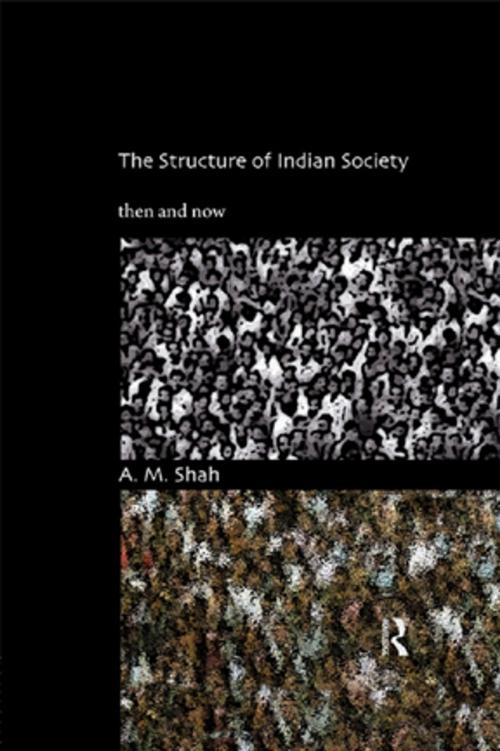The Structure of Indian Society
Then and Now
Nonfiction, Social & Cultural Studies, Social Science, Anthropology, Sociology| Author: | A.M. Shah | ISBN: | 9781136197703 |
| Publisher: | Taylor and Francis | Publication: | December 6, 2012 |
| Imprint: | Routledge India | Language: | English |
| Author: | A.M. Shah |
| ISBN: | 9781136197703 |
| Publisher: | Taylor and Francis |
| Publication: | December 6, 2012 |
| Imprint: | Routledge India |
| Language: | English |
This book has a collection of ten articles written during 1982–2007 and an exhaustive introduction on the structural features of Indian society, that is, the enduring social groups, institutions and processes, such as caste, tribe, sect, rural-urban relations, etc. The book views Indian society in contemporary as well as historical perspective, based on a wealth of field research as well as archival material.
The book focuses on the significance of village studies in transforming the understanding of Indian society and also shows how urban centres have been useful in shaping society. Taking a critical look at the prevailing thinking on various structures and institutions, the author uses insights derived from his comprehensive studies of kinship, marriage, religion, and grassroots politics in advancing their studies. He points out the strengths and weaknesses of these structures and institutions and the direction in which they are changing with respect to modern time.
As against the overwhelming emphasis on the hierarchical dimension of caste, this book focuses on its horizontal dimension, that is, every caste’s population spread over villages and towns in an area, its internal organization and differentiation based on networks of kinship, marriage, patron-client relationship, and role of endogamy versus hypergamy in maintaining its boundaries. The tribes are also seen in the same perspective, emphasizing the tribe-caste homology.
Finally, the book provides information on important issues like policy of reservations, the reliability of censuses and surveys of castes and tribes, removal of untouchability, growth of organized religion and secularization.
This book has a collection of ten articles written during 1982–2007 and an exhaustive introduction on the structural features of Indian society, that is, the enduring social groups, institutions and processes, such as caste, tribe, sect, rural-urban relations, etc. The book views Indian society in contemporary as well as historical perspective, based on a wealth of field research as well as archival material.
The book focuses on the significance of village studies in transforming the understanding of Indian society and also shows how urban centres have been useful in shaping society. Taking a critical look at the prevailing thinking on various structures and institutions, the author uses insights derived from his comprehensive studies of kinship, marriage, religion, and grassroots politics in advancing their studies. He points out the strengths and weaknesses of these structures and institutions and the direction in which they are changing with respect to modern time.
As against the overwhelming emphasis on the hierarchical dimension of caste, this book focuses on its horizontal dimension, that is, every caste’s population spread over villages and towns in an area, its internal organization and differentiation based on networks of kinship, marriage, patron-client relationship, and role of endogamy versus hypergamy in maintaining its boundaries. The tribes are also seen in the same perspective, emphasizing the tribe-caste homology.
Finally, the book provides information on important issues like policy of reservations, the reliability of censuses and surveys of castes and tribes, removal of untouchability, growth of organized religion and secularization.















